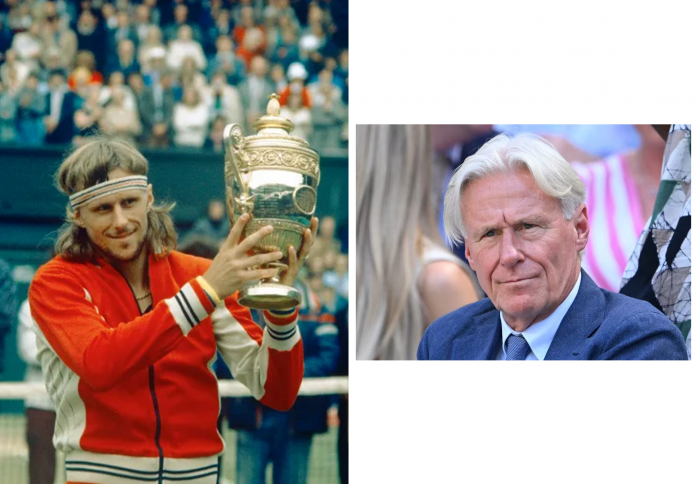The notoriously private tennis icon, Björn Borg, has, in the release of his autobiography, HeartBeats: A Memoir, revealed a deeply personal and ongoing battle against an “extremely aggressive” form of prostate cancer. The revelation, made by the 11-time Grand Slam champion, sent shockwaves through the tennis community and highlighted a rarely seen vulnerability in the man once nicknamed the “Ice Man.” Diagnosed in September 2023, the 69-year-old Swede underwent surgery in early 2024 and has since entered remission. However, Borg describes his health situation as a continuous fight—a new, unpredictable opponent that he faces with the same ruthless determination he once displayed in five consecutive Wimbledon finals. His candid disclosure, co-written with his wife Patricia, serves as both a therapeutic release and a powerful call to action regarding the silent threat of prostate cancer.
The Diagnosis And The Defiance
Borg’s health crisis began with a routine check-up, underscoring the silent, often undetectable nature of prostate cancer in its early stages. Despite feeling well, doctors raised an alarm in September 2023 following concerning test results.

Ignoring Medical Advice: The timing of the troubling diagnosis coincided precisely with his commitment to captain Team Europe at the Laver Cup in Vancouver. The Swede, whose career was defined by a single-minded focus on competition, defied medical advice that suggested he should stay home. “Of course I went… I didn’t listen,” he later admitted in an interview. This decision, prioritizing his duty in tennis over his immediate health, speaks volumes about the enduring competitive spirit that remains the cornerstone of his personality.
The ‘Psychologically Difficult’ Wait: Upon returning to Sweden from the Laver Cup, Borg immediately underwent further tests that confirmed the diagnosis of an “extremely aggressive” prostate cancer. He was scheduled for surgery in February 2024, a waiting period he described as “psychologically very difficult.” The uncertainty and fear surrounding the cancer’s progression during the several-month wait weighed heavily on the former World No. 1, contrasting sharply with the total control he was known to possess during his playing career.
The Wimbledon Final Mentality
Facing this life-threatening opponent, Borg has found inspiration and strength in the competitive philosophy that drove him to unparalleled success on the tennis court during the late 1970s and early 1980s.
A New Opponent: In his memoir, Borg draws a direct parallel between his cancer battle and his legendary career. “Now I have a new opponent in cancer—one I can’t control,” he writes. But he adds the decisive promise: “But I’m going to beat it. I’m not giving up. I fight like every day is a Wimbledon final. And those usually go pretty well, don’t they?” This comparison highlights his total commitment to fighting the disease with the same urgency and focused ferocity he deployed against rivals like John McEnroe.
The Road to Remission: Following the successful operation in February 2024, Borg confirmed in September 2025 that the cancer is currently in remission, with his most recent tests returning clean results. However, the battle is not over. Borg revealed to the BBC that doctors warned him that he has “sleeping cancer cells” in his body, meaning the threat of recurrence is constant. He now undergoes check-ups every six months, stating: “It’s a thing I have to live with. I take it day by day, year by year, hopefully.”
The Reckoning: Retirement’s Turbulence
The memoir, co-written with his wife Patricia, offers a comprehensive look at Borg’s life, not shying away from the profound difficulties he faced after stunning the world with his unexpected retirement at the age of 26.

Lost in the World: Borg, who won 11 Grand Slam singles titles and five straight Wimbledon championships, abruptly retired in 1981 after losing the Wimbledon and US Open finals to John McEnroe. He confesses in the book that he had “no plan” for life outside of tennis, which led to a chaotic period of self-destruction. He described feeling “lost in the world” and revealed that he tried to “escape myself from reality” through substance abuse.
Panic and Shame: The autobiography candidly addresses his struggles with panic attacks, which began in 1982, and his subsequent addiction battles with “drugs, pills, [and] alcohol.” In a chilling revelation, Borg recounted being rushed to a Dutch hospital in the 1990s after an overdose, stating that he was “close to dying many times.” The emotional low point, he noted, was the “worst shame of all,” when he looked up from his hospital bed and saw his visiting father. This section of the memoir provides a raw counterpoint to his public image as the serene, untouchable champion.
The Public Service Message
The decision by the famously private Swede to disclose his cancer battle and past struggles was motivated by a desire for personal relief and a profound sense of public responsibility.
A Therapeutic Release: After working on the book for two and a half years, Borg stated that sharing these deeply personal aspects of his life was a form of catharsis. “I went through some difficult times, but (it’s) a relief for me to do this book,” he said. “I feel so much better.” By opening up about his vulnerabilities, Borg is providing an honest conclusion to a life that had been shrouded in myth and mystery since his early departure from the sport.
The Call for Screening: Most importantly, Borg utilized his platform to issue a serious public health message. Knowing that prostate cancer often presents without symptoms, he urged men to get regular screenings. “So many people die every year, prostate cancer,” Borg stated during a BBC interview. “Test yourself if you can.” The former champion’s candidness transforms his personal health scare into a powerful, life-saving plea for early detection, giving his battle a purpose that transcends the tennis world.










